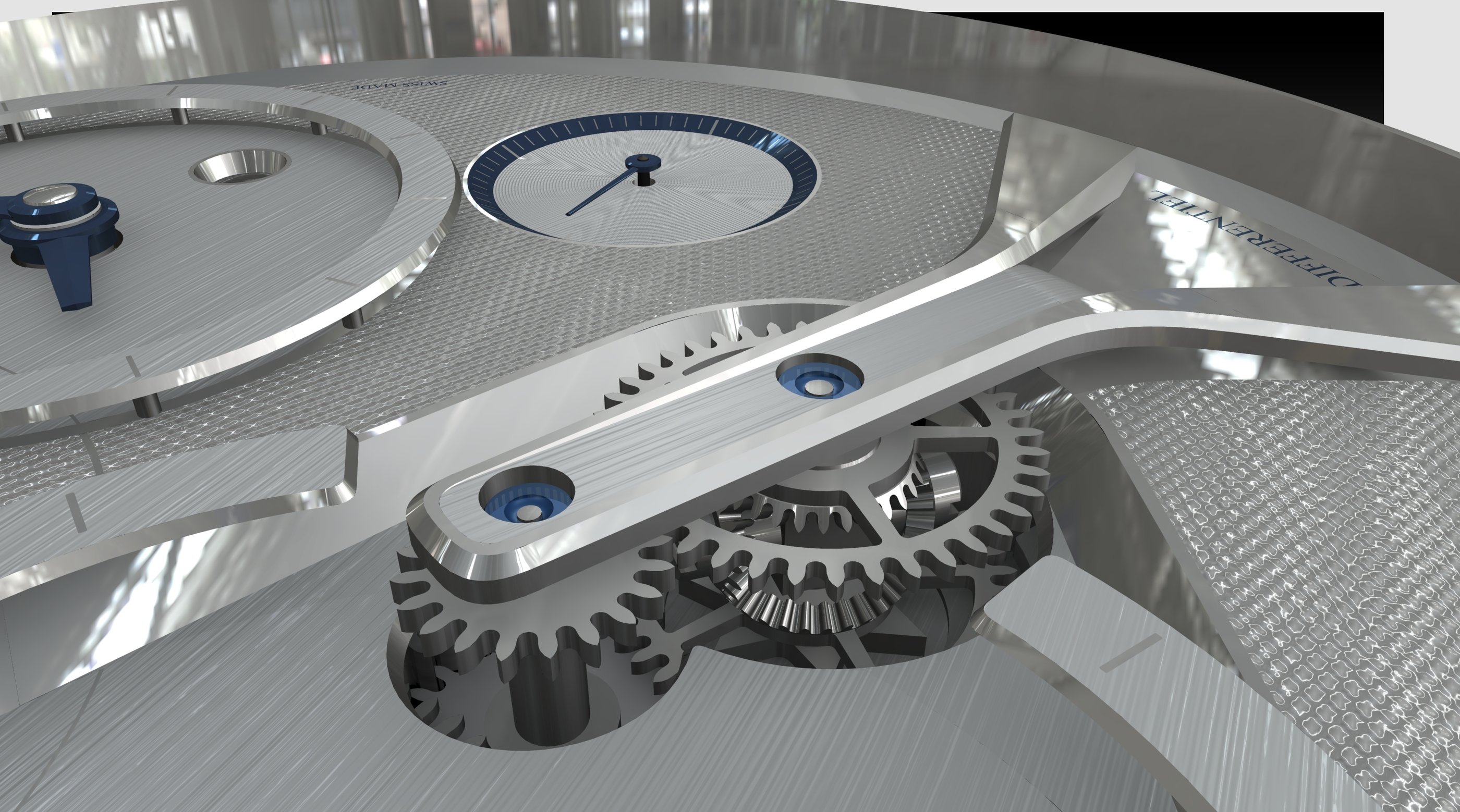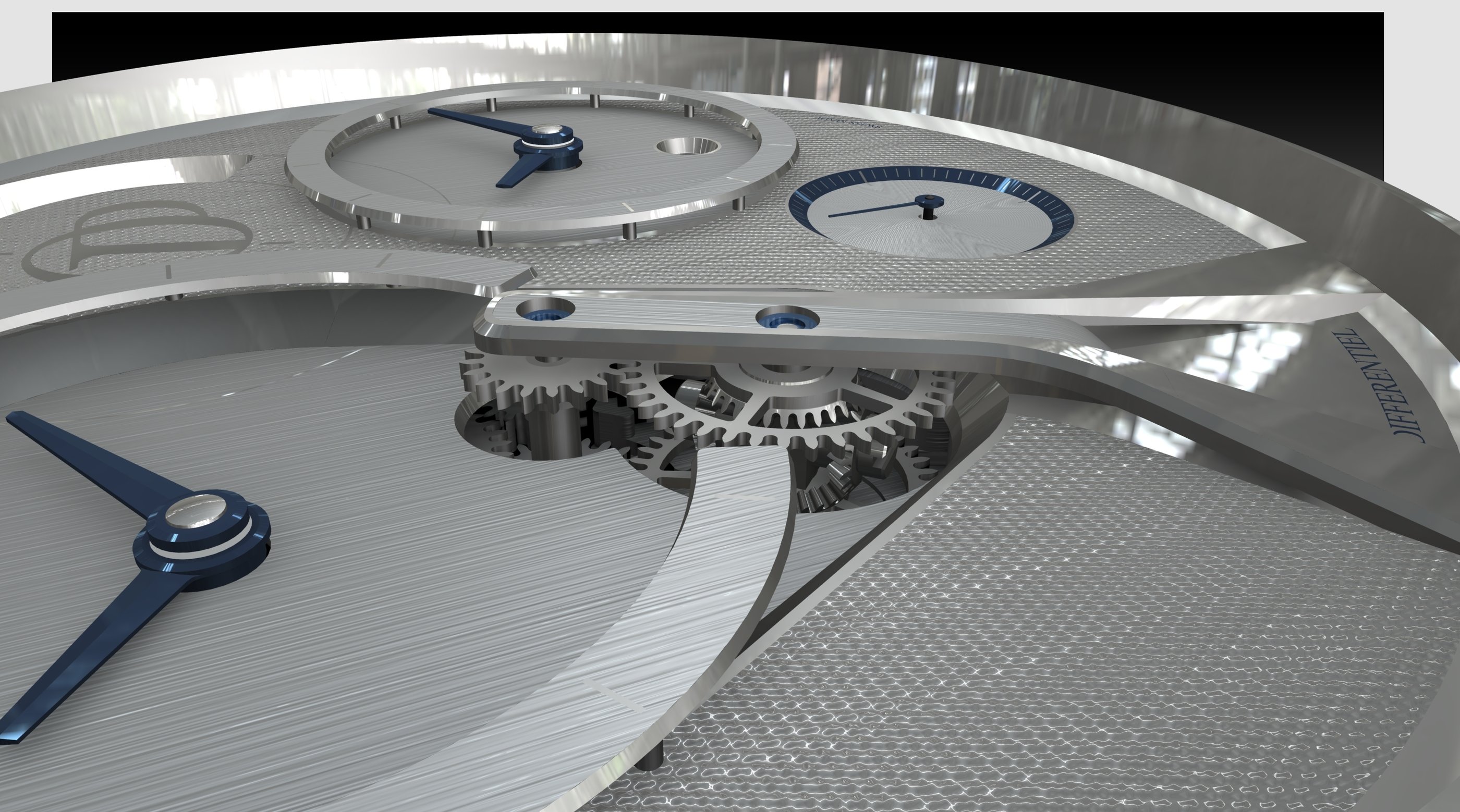egend has it that German poet Johann Goethe (1749-1832) once ended a lengthy missive with the phrase, “I’m sorry I didn’t have time to make it shorter.” Simplifying the complex is something of an art.
The designers of the Pecqueur Motorists Dual Time LTM 5021 (read more about the movement in the previous episode), the passcode and emblem of the club that bears its name, are well aware of this paradox. They are forced to walk a very fine line, given that one of the defining features of the movement has always been that the differential module should be clearly visible on the dial, without eclipsing the many time indications.
In fact, very little about this watch is ordinary or run-of-the-mill. In our daily life, this unusual timepiece is designed to expand our sense of space and time, issuing a constant invitation to travel via its superbly readable local time display and time zone markers.
In the beginning was… the compass
In Swiss watchmaking tradition, the word habillage describes all the elements of watch – case, dial, hands – that are not the movement. This tradition speaks volumes about the attention paid by professionals to the silhouette (case) and face (dial) of time. As with any haute couture creation, everything begins with a line on paper – a projection of ideas and concepts from the designer’s mind into reality.
The project’s mentors entrusted this task to Stellantis Design Studio, created in 2021 by the Stellantis group on the model pioneered by the Peugeot Design Lab. “The designers drew their inspiration from watch wheels and gears,” explains Hamdi Chatti, who manages the Pecqueur Motorists watch project. “The case, the dial and the engraving on the caseback were drawn with the aid of compasses.”
Compasses describe a circle, a disc… geometric figures that take us right back to protohistorical mechanisms for measuring time: sundials, which consist of a circle and a gnomon or pointer. For centuries, that was all we needed to mark our days.
-

- Prototype of the Pecqueur Motorists watch in the final phase of development
The stylistic choices made by Stellantis Design Studio are a testament to their considerable watchmaking culture. They are anything but bland, as Hamdi Chatti points out. “The perfect harmony of the different circles, each with their own function, act as a foil to the differential.” The differential itself – technical genius in concentrated form – is the keystone of the piece, conveying an impression of technical complexity at the very first glance.
Once the design had been finalised and approved, it was time to move to the complex manufacturing phase. This is where theory becomes practice. Throughout this operation, the Pecqueur Motorists project relied on the expertise of two young independent businesses that are well known for their professionalism: Comblémine and AB Concept.

Three-dimensional architecture
The first functional prototypes of the Pecqueur Motorists watch will be unveiled at the beginning of April 2023, thanks in large part to the perseverance and brilliance of dial-maker Comblémine, which has been operating in the Val-de-Travers since 2014. Europa Star met its founder and CEO Christophe Beuchat, who set the tone from the start: “Our in-house dial-maker worked intensively on the many details of the dial, to ensure a result that was as faithful as possible to the original design.”
-

- The day/night dial developed by Comblémine for Pecqueur Motorists
The art of dial-making has a rich industrial heritage, at the crossroads of engineering and fine art. The hundreds of operations involved in designing a new dial require rigour, microscopic precision and also an extremely high sensitivity to colour. The expertise and creativity of Comblémine provided an almost infinite palette of colours for the Pecqueur Motorists project to choose from. The wide variety of colour combinations trialled for the small day/night disc are a tribute to this creative freedom.
-

- Detailed view of the dial on seven levels
Another feature of the Pecqueur Motorists watch that deserves recognition is the three-dimensional architecture of its dial. “The dial design is complex because of its different height levels,” explains Christophe Beuchat. “It is made up of seven pieces, and required the addition of 2.5mm-high feet [underneath the dial, to attach it to the movement], which is unusually tall for the industry.”
To achieve this, 3-axis digital machining was required, along with a 5-axis machine to mill the corners of the 24-hour aperture. Each of the dial pieces is immersed in an electroplating bath, which creates a metallic coating via electrolysis. This chemical process hardens the machined pieces and allows for the creation of a variety of aesthetic options at the same time. The dial of the Pecqueur Motorists watch is a lot more than the sum of its parts. The variety of textures created through Geneva striping, sandblasting and diamond polishing give it instant appeal.
Like a musician, each polisher has an extensive personal repertoire of different tools, which might include abrasive pastes made from ground gemstones, and brushes with brass bristles, which produce virtuosic results in the right hands.
Once the dial and hands have been attached to the Pecqueur Differential Dual Time LTM 5021 calibre, the prototype is almost ready. All that remains is one final step: casing-up.
Squaring the circle
“In both the automotive industry and in watchmaking, fitting the movement (the engine) inside the case (the body) is an essential step,” explains Aurélien Bouchet, CEO of AB Concept, the firm responsible for designing and manufacturing the case of the Pecqueur Motorists watch. “Technical conversations between the different stakeholders are the key to designing a watch like a racing car.”
The case of the Pecqueur Motorists watch is designed to draw the eye. To take one example, the discreet configuration of the pushpieces might seem obvious. But, as Aurélien Bouchet points out, “We had to take into account the constraints of the movement and the tiered architecture of the dial.”
-

- Detailed view of the case
The case made by AB Concept is an accurate translation of the wishes of Stellantis Design Studio. It provides an enclosure, a frame, a reassuring backdrop, never overshadowing the aesthetic of the dial. This remarkable result exceeded the expectations of Aurélien Bouchet. “The Pecqueur Motorists watch succeeds in integrating exacting technical requirements with a refined and unique design.”
Conclusion
Some will be tempted to compare the Pecqueur Motorists watch with other models. But it’s a futile exercise. This third chapter in the Pecqueur saga concludes with one certainty: we have rarely had the privilege of witnessing the birth of a watch with such a complex design, such an original approach to engineering and watchmaking functions, with such a harmonious case and dial design.
Those in charge of this new watchmaking project have been unusually determined in their search for a balance between technical prowess and elegance. As Hamdi Chatti notes: “There is always a connection between beauty and function.” And this example fully embodies the motto “Mechanical Arts in Motion” so dear to Patrick Bornhauser, Founding President of BPM Group, where the Pecqueur Motorists project originated.
CLICK HERE FOR MORE INFORMATION












